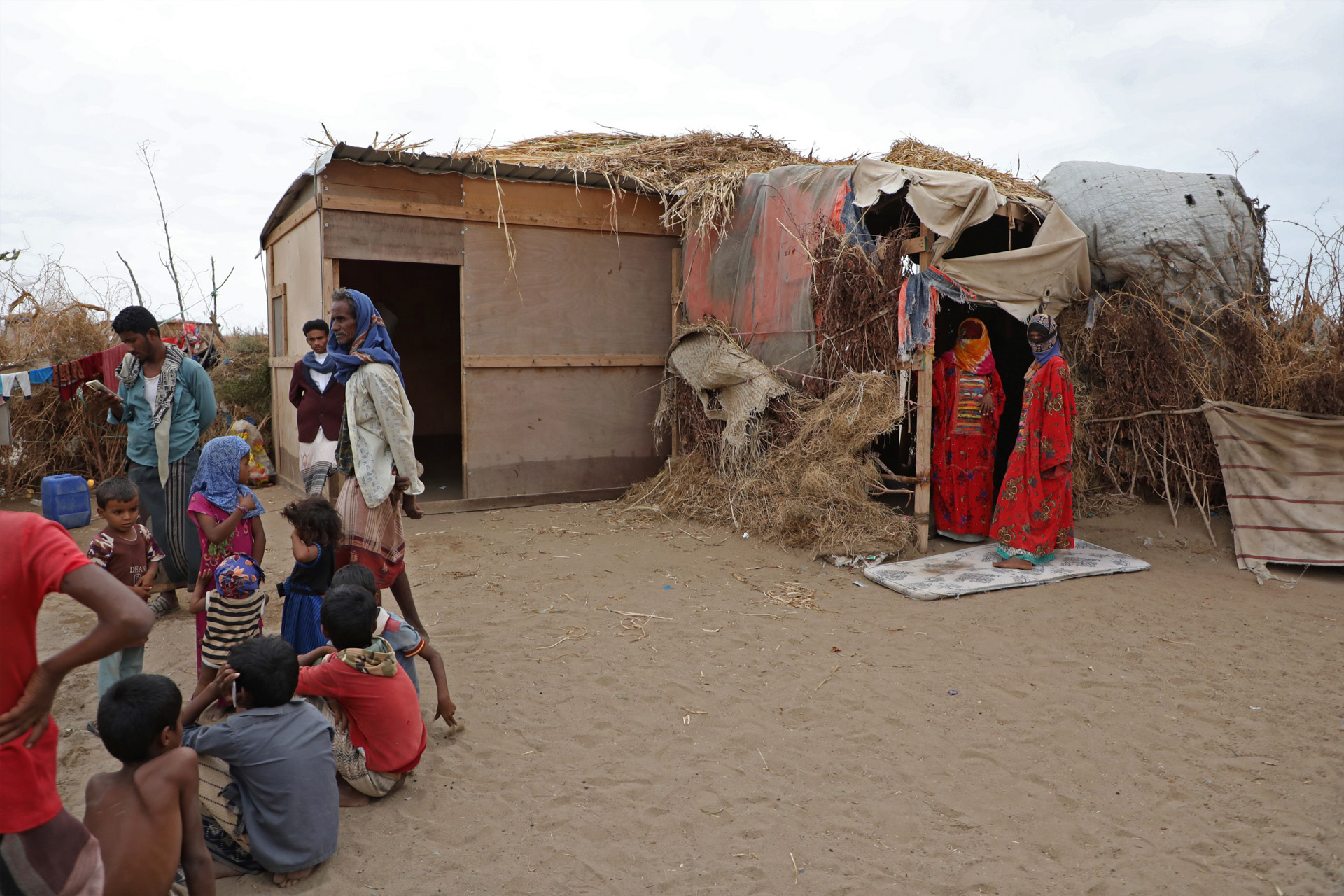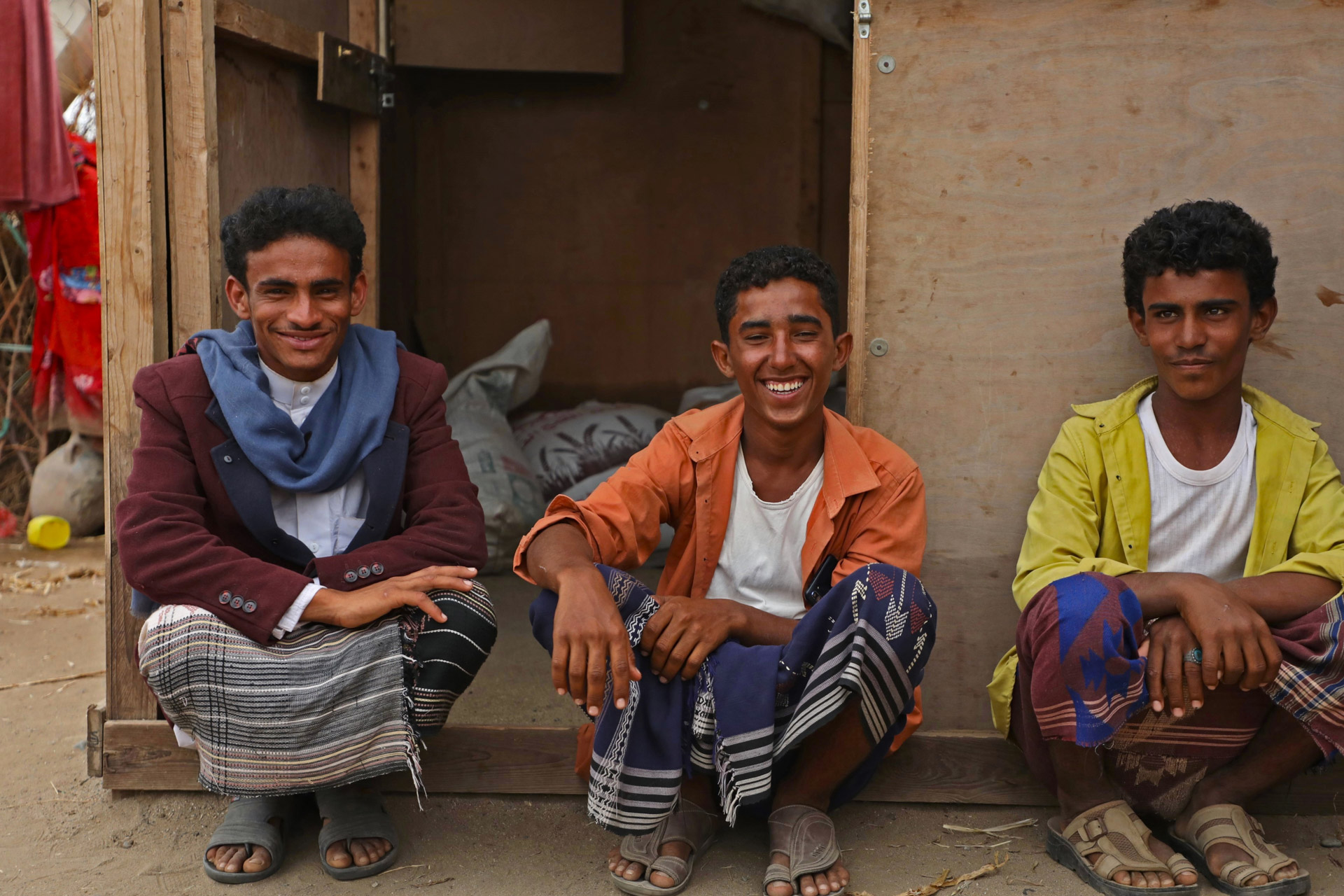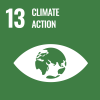West Coast, Yemen – In her coastal home in Mokha, Zahara diligently tends to the cooking. As the head of the household, her days are bustling with chores. Dressed in vibrant traditional attire, she checks on the food and ensures the children are cared for. Given her serene demeanour, it’s easy to overlook the challenges she faces.
She cares for her husband whose health is frail and ensures that every member of her extended family is well-fed and content. She feels that she owes them for the support they provided seven years ago when her family was forced to flee the turmoil of conflict in her home district of At Tuhayta.
Now, Zahara’s family of ten, along with three other households, form a tight-knit community, united by family ties and mutual support. With their new shelter, they have found a safe haven from Mokha’s strong winds and torrential floods, as well as the privacy they have been longing for amidst the bustling life of communal living.
Over a year ago, they received a new transitional shelter from the International Organization for Migration (IOM). Designed to withstand the ferocity of Yemen’s coastal winds and seasonal rains, it offers not only physical protection but also security and privacy – a rare luxury for displaced people.
“Thanks to our shelter, we finally feel safe,” Zahara shares. “It shields us from the weather and gives us a space for ourselves. We didn’t know how much we needed it until we received it.”

Brothers Ali and Abdu, like many others on Yemen's West Coast, make ends meet through farming and fishing. Photo: IOM/Monica Chiriac
Yemen’s protracted conflict has triggered a severe humanitarian crisis, propelling millions of Yemenis into displacement. It has resulted in civilian casualties, destruction of infrastructure, and the breakdown of essential services. This upheaval has compelled Yemenis to seek safety within the country or across its borders, straining resources and exacerbating the already dire humanitarian situation.
Those displaced are now facing a myriad of challenges, including overcrowded and inadequate living conditions, amplifying their vulnerability to disease and hazards. Traditional makeshift shelters, prevalent in displacement sites, pose environmental risks due to their short lifespan, need for frequent replacement, and generation of plastic waste, emphasizing the urgent need for sustainable solutions.
The socio-political turmoil in Yemen is further compounded by the increasing frequency of extreme weather events, including droughts, floods, and storms, which pose direct threats such as malnutrition and waterborne diseases, and exacerbate existing tensions over access to dwindling resources like water and energy.

Cradled in hammocks outside, the little ones enjoy the gentle sway and much-needed fresh air. Photo: IOM/Monica Chiriac

IOM prioritizes female-headed households, individuals with special needs who need tailored shelter support, and those living in inadequate conditions. Photo: IOM/Monica Chiriac
Climate change has disrupted Yemen’s typical rainfall pattern, resulting in intense downpours that saturate the soil and trigger floods. In 2023, severe rains and flooding led to displacement, extensive damage to houses, shelters, roads, and other infrastructure, disrupting the delivery of essential life-saving services. In 2024, it is estimated that approximately 6.7 million people, including displaced individuals, returnees, and host communities, will require shelter assistance.
To address these pressing issues, IOM consulted widely, including with affected communities, to devise sustainable solutions tailored to specific needs and preferences. Through this inclusive approach, several initiatives were conceived: the construction of plywood transitional shelters, the distribution of cash assistance for kitchen construction, and financial support for eco-friendly stoves.
By incorporating locally sourced materials and sustainable construction practices, IOM not only provides shelter but also addresses environmental concerns within displaced communities by reducing the need for frequent replacements.

At his age, Ali, a relative of Zahara, prefers spending time with the children at home, finding comfort in the security provided by the new shelter. Photo: IOM/Monica Chiriac
“We have noticed that the shelter design has improved based on our ideas,” Zahara shares. “It was important for us to have good ventilation because it gets very hot here.” Over the year since they moved in, the family has made the shelter their own, adding personal touches to make it feel like home.
Since 2023, these interventions have provided support to close to 2,500 households through transitional shelters, over 1,000 with kitchen support, and more than 4,000 with non-food items, spanning regions like Ma’rib, the West Coast, and South Ta’iz. These interventions aim to mitigate the immediate challenges faced by displaced persons and foster long-term resilience and sustainability within affected communities.
“The shelter isn’t just a roof over our heads; it’s a lifeline,” Zahara explains. “It gives me hope that in the long run we will be alright.”

After a hard day's work, Ali and his friends look forward to unwinding at home and spending quality time with family. Photo: IOM/Monica Chiriac
IOM’s shelter response through transitional shelters in Yemen has been funded by USAID’s Bureau of Humanitarian Assistance (BHA), EU Humanitarian Aid (ECHO), King Salman Humanitarian Aid and Relief Centre (KSrelief), the German Federal Foreign Office (GFFO), and UN’s Central Emergency Response Fund (CERF).
This story was written by Monica Chiriac, Media and Communications Officer with IOM Yemen.


